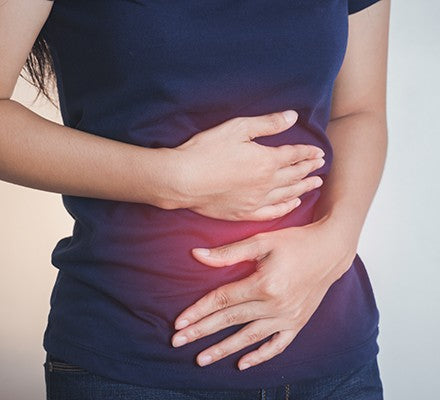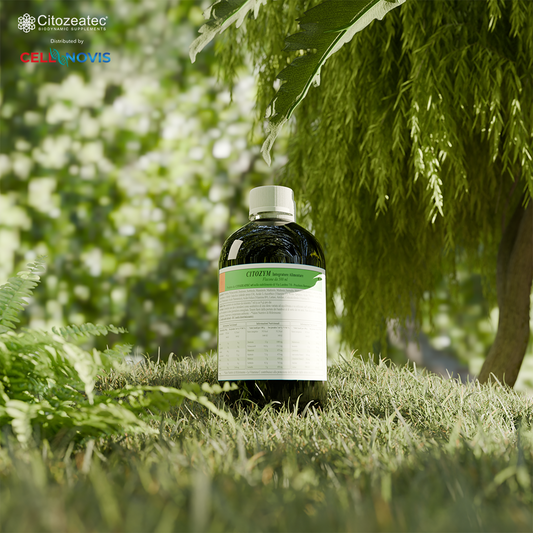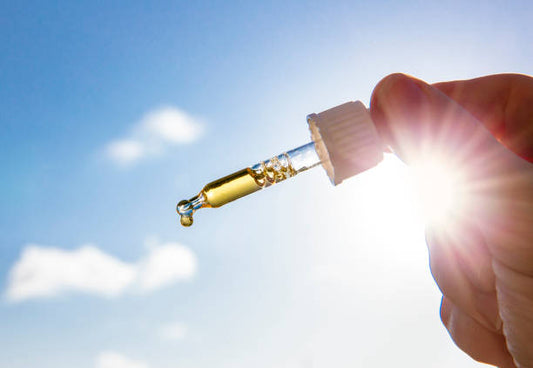Discover Related Products
Now explore supplements designed to support Longevity, Gut Health & Cellular Vitality.
CITOZYM - Support Natural Detox, Immune and Longevity Support
The Impact of Microplastics and Nanoplastics on the Environment and Human Health

Microplastics and nanoplastics are a growing threat to our environment and health. These tiny plastic fragments, which come from the breakdown of larger plastic waste, are found everywhere, from the ocean surface to the deep sea, and even in polar ice. This article examines the nature, sources, and effects of microplastics and nanoplastics, highlighting the urgent need for actions to reduce their negative impacts.
What Are Microplastics and Nanoplastics?
Microplastics are plastic particles smaller than 5 millimeters, while nanoplastics are even smaller, measuring less than 100 nanometers. These particles fall into two main categories:
1. Primary Microplastics: Intentionally produced for use in products like cosmetics, detergents, and paints.
2. Secondary Microplastics: Result from the breakdown of larger plastic items, such as bottles, bags, and fishing nets, due to exposure to environmental factors like sunlight and mechanical erosion (1).
Sources of Microplastics and Nanoplastics
Microplastics and nanoplastics come from various widespread sources, including:
- Consumer Products: Cosmetics and personal care products often contain plastic microbeads (2).
- Synthetic Clothing: Washing synthetic fiber clothing releases plastic microfibers into the water (3).
-
Degradation of Plastic Waste: The fragmentation of larger plastic waste contributes to the production of secondary microplastics.
Environmental Impacts
Microplastics and nanoplastics have severe effects on ecosystems:
- Oceans: Microplastics are found in all marine zones, from the surface to the depths. These particles can be ingested by marine organisms, causing physical and toxicological harm (4).
-
Soil: Agricultural soils are also contaminated, primarily due to the use of sewage sludge and fertilizers containing plastic (5).
Harm to Human Health
Microplastics and nanoplastics, due to their small size, can penetrate biological tissues and accumulate within the human body, causing a range of adverse health effects. Scientific studies are beginning to uncover the potential damage caused by these particles, highlighting a concerning scenario.
Ingestion and Absorption
Ingesting microplastics through contaminated food and water is one of the main exposure routes for humans. Once ingested, these particles can:
- Penetrate Tissues: Smaller particles, such as nanoplastics, can cross cellular barriers and penetrate body tissues, including the intestines (6).
- Cause Inflammation: The presence of microplastics in the gastrointestinal tract can trigger an inflammatory response, damaging intestinal cells and altering gut flora (4).
Toxic Effects
Microplastics and nanoplastics are not only physically harmful; they can also carry toxic chemicals that stick to their surfaces during their journey through the environment. These chemicals include:
- Plastic Additives: Compounds like phthalates and bisphenol A (BPA), known for their endocrine-disrupting effects, can be released from microplastics once inside the body (5).
-
Persistent Organic Pollutants (POPs): Microplastics can absorb POPs from the environment, such as pesticides and polychlorobiphenyls (PCBs), which, once released into the body, can accumulate in tissues and cause long-term toxic effects (7).
Systemic Impacts
Prolonged exposure to microplastics and nanoplastics can have systemic effects on the human body, including:
- Liver and Kidney Damage: Animal studies have shown that the accumulation of microplastics can cause oxidative stress and cellular damage to the liver and kidneys (6).
- Metabolic Disorders: Disruption of the gut microbiome caused by ingesting microplastics can affect metabolism and contribute to disorders like obesity and diabetes (3).
-
Immune System Effects: Continuous interaction with plastic particles can overload the immune system, leading to chronic inflammation and compromising immune response (2).
Mitigation Measures
Addressing the issue of microplastics and nanoplastics requires coordinated global actions. Effective measures include:
Improving Waste Management Systems:Implementing more efficient collection and recycling systems.
Education and Awareness: Informing the public about the risks associated with microplastics and encouraging sustainable behaviors.
Detoxification Measures
While preventing and reducing exposure to microplastics is essential, exploring detoxification measures for those already exposed to these particles is equally important. Current detoxification strategies under study include:
- Chelators and Adsorbents: Using chelators and adsorbents may help bind and remove microplastics and nanoplastics from the body. Compounds like activated charcoal and bentonite clay have been studied for their ability to adsorb toxic chemicals and foreign particles (8).
- Antioxidants: Taking natural antioxidants, such as vitamins C and E, can help mitigate oxidative stress induced by the presence of microplastics in body tissues. Antioxidants can neutralize free radicals and reduce inflammation (9).
- Supporting Gut Microbiome: Using probiotics and prebiotics can help maintain a healthy gut microbiome, enhancing the body's resistance to the harmful effects of microplastics. A balanced microbiome can reduce inflammation and improve immune function (10).
- Dietary Fiber: Incorporating a diet rich in fiber can help improve intestinal motility and facilitate the expulsion of ingested plastic particles. Fiber-rich foods, such as fruits, vegetables, legumes, and whole grains, can promote intestinal health (11).
- Adequate Hydration: Drinking plenty of water can support the lymphatic and renal systems in the process of eliminating toxins, including microplastic and nanoplastic fragments. Good hydration is crucial for maintaining the efficiency of the body's natural detoxification processes (12).
Microplastics and nanoplastics present a complex and multifaceted challenge to the environment and human health. It is essential to adopt an integrated approach that includes preventive measures as well as mitigation and detoxification interventions to effectively address this problem. Only through concerted efforts and increased awareness can we protect our planet and our health from the dangers of these tiny but perilous plastic particles.
References
- Li, J., Liu, H., & Chen, J. P. (2018). Microplastics in freshwater systems: A review on occurrence, environmental effects, and methods for microplastics detection. Water Research, 137, 362-374.
- Leslie, H. A., Van Velzen, M. J. M., Brandsma, S. H., Vethaak, A. D., Garcia-Vallejo, J. J., & Lamoree, M. H. (2020). Discovery and quantification of plastic particle pollution in human blood. Environment International, 146, 106274.
- Henry, B., Laitala, K., & Klepp, I. G. (2019). Microfibres from apparel and home textiles: Prospects for including microplastics in environmental sustainability assessment. Science of The Total Environment, 652, 483-494.
- Cole, M., Lindeque, P., Halsband, C., & Galloway, T. S. (2011). Microplastics as contaminants in the marine environment: A review. Marine Pollution Bulletin, 62(12), 2588-2597.
- Corradini, F., Casado, F., Leiva, V., Huerta-Lwanga, E., & Geissen, V. (2021). Microplastics occurrence and frequency in soils under different land uses on a regional scale. Science of The Total Environment, 752, 141917.
- Smith, M., Love, D. C., Rochman, C. M., & Neff, R. A. (2018). Microplastics in seafood and the implications for human health. Current Environmental Health Reports, 5(3), 375-386.
- Barboza, L. G. A., Vethaak, A. D., Lavorante, B. R. B. O., Lundebye, A. K., & Guilhermino, L. (2018). Marine microplastic debris: An emerging issue for food security, food safety and human health. Marine Pollution Bulletin, 133, 336-348.
- Prata, J. C., da Costa, J. P., Lopes, I., Duarte, A. C., & Rocha-Santos, T. (2020). Environmental exposure to microplastics: An overview on possible human health effects. Science of The Total Environment, 702, 134455.
- Andrady, A. L. (2011). Microplastics in the marine environment. Marine Pollution Bulletin, 62(8), 1596-1605.
- Schröder, P., Helmreich, B., Škrbić, B., Carballa, M., Papa, M., Pastore, C., & Mascolo, G. (2016). Status of hormones and painkillers in wastewater effluents across several European states—considerations for the EU watch list concerning estradiols and diclofenac. Environmental Science and Pollution Research International, 23(13), 12835-12866.
- Lambert, S., & Wagner, M. (2018). Microplastics are contaminants of emerging concern in freshwater environments: An overview. Water Research, 155, 410-422.
- Popkin, B. M., D’Anci, K. E., & Rosenberg, I. H. (2010). Water, hydration, and health. Nutrition Reviews, 68(8), 439-458.







No comments